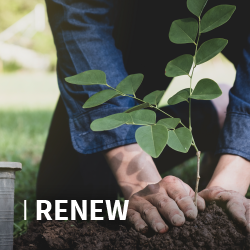Economists will tell you inflation and interest rates often have an inverse relationship. When interest rates are low, the economy generally expands, and inflationary pressures increase. When interest rates increase, the economy tends to slow, and inflationary pressures ease.
According to Joe Pickard, ISRI’s chief economist and director of commodities, the overall economy grew for the 19th month in a row after a contraction in April 2020. He cited the Institute for Supply Management’s December 2021 manufacturing purchasing managers’ index that registered 58.7%, a decrease from the November reading of 61.1%. An index number over 50.0% shows growth.
The Federal Reserve’s statutory goals are to promote maximum employment and price stability using its various monetary tools. Minutes of the board’s Dec. 14–15 meeting show members stand ready to use any and all monetary tools as economic conditions warrant and to increase the rate of tapering bond buying, as well as reducing holdings of Treasury notes and mortgage-backed securities. A common thought among economists is that the Fed will raise interest rates two or three times in 2022.
“For recyclers, one of the concerns is that as interest rates go up, borrowing costs go up too. So, to the extent that they need to make capital expenditures, those borrowing costs could go up,” says Pickard. “Even with three rate hikes, interest rates are still going to be relatively low by historical measures. But the expectation that [the Fed is] going to start raising rates is going to step up the timeline for recyclers as they’re considering their investments.”
According to the Bureau of Labor Statistics’ (BLS) figures released Jan. 7, the jobless rate fell to 3.9% in December, based on data collected during a period that largely predated the worst of the Omicron-driven coronavirus surge. But recyclers are still having problems keeping a full workforce. Meanwhile commodities values are strong.
Goldman Sachs Group Inc. is “extremely bullish” on commodities amid a super-cycle that has the potential to last through the decade, Jeff Currie, the bank’s head of commodities research, told Bloomberg Television on Jan. 6. “The best place to be right now, particularly given the Fed pivot, are commodities,” he says.
ISRI’s economists don’t see commodities losing value anytime soon—particularly given the possibilities for U.S. infrastructure spending—but caution that materials alone aren’t the only factor for recyclers to consider in their planning. “The commodities are at 10-year highs. Paper was last at the current level 11 years ago,” explains Bret Biggers, ISRI senior economist. “Labor shortages could be adding to these elevated values by limiting supply while demand is high. It could also be that when you find labor, you have to pay them more, which means that drives your direct cost up.”
ISRI’s economists agree that finding qualified workers and the ongoing transportation problems in global supply chains will dominate recyclers’ thinking well into the year. Both are areas where costs continue to go up. “The difficulty is as the BLS [commodities] index levels come down, perhaps in the third or fourth quarter of this year, then we’re stuck with the costs of hiring the new labor that we needed,” Biggers says. “We’re stuck with the vendor contracts that are based on the first half of the year costs, and the contracts are full-year contracts.”
ISRI’s commodities team knows this is a difficult and precarious time for recyclers. The Fed is watching the economy very closely, standing by to help. In the meantime, ISRI’s economists’ cautionary advice to recyclers is this: Be aware of how long your contracts are; think about negotiating quarter-to-quarter agreements to avoid deals with full-year levels.
Image courtesy of Storyblocks.
Additional Resources













